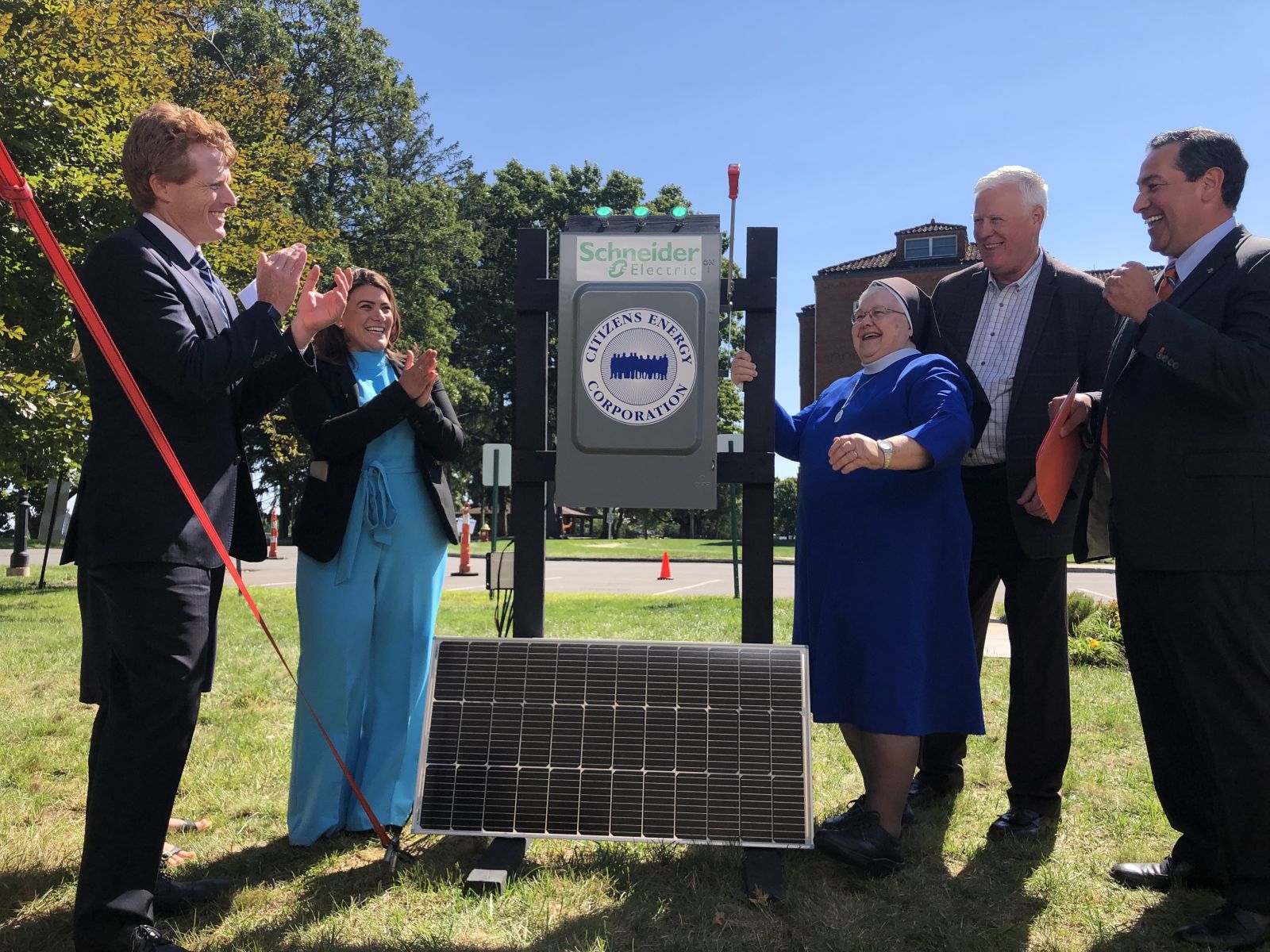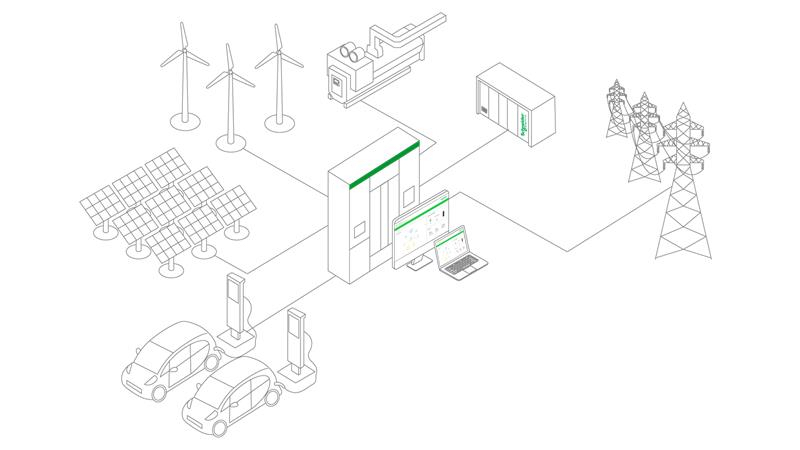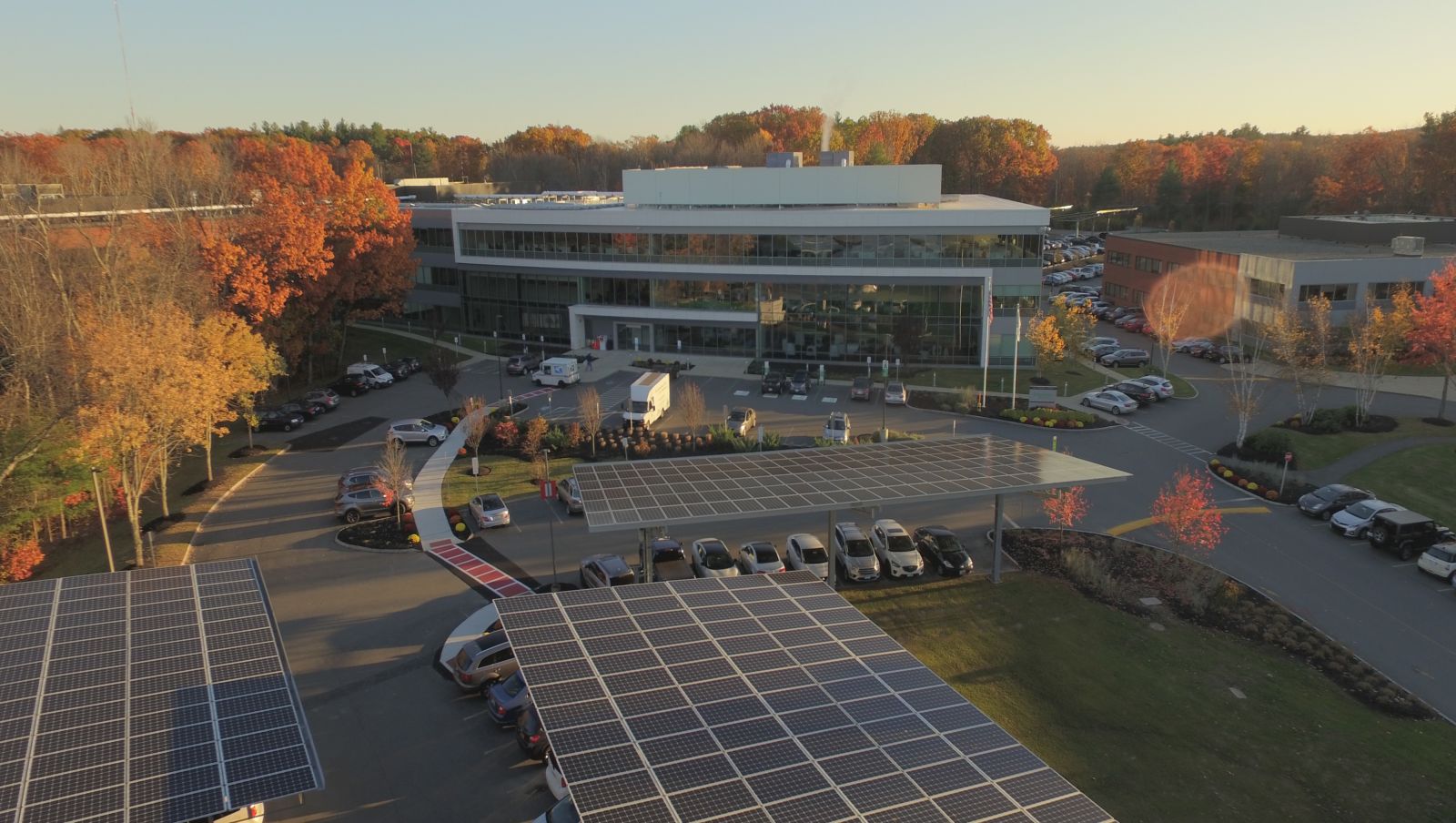Microgrids and Advanced Batteries — a New Power Paradigm
The facilities at the Daughters of Mary of the Immaculate Conception campus in New Britain, Connecticut produce additional solar energy each year, thanks to their innovative and advanced battery microgrid. The organization has successfully reduced their carbon footprint by leveraging Battery Energy Storage Systems (BESS) with on-site generation, which promote reduced greenhouse gas emissions while providing resilient power.

The Daughters of Mary are valuable members of the community. The services they provide help keep the New Britain community safe and healthy. Reliable power, and the ability to operate independently from the grid, help keep the well-being of some of the community’s most vulnerable populations intact. Understanding the importance of keeping the lights on no matter what, leaders at the Daughters of Mary sought out a new power paradigm of grid independence, resilience, and sustainability — an arrangement many organizations are adopting today.
Buildings become more resilient
Many buildings, like those of the Daughters of Mary’s New Britain campus, are consumers of energy solely from the grid. As such, they are at risk for resilience, especially during natural disasters. When the utility goes down, so do building operations. Even when the grid isn’t facing a statewide blackout, organizations must adhere to opaque pricing from utilities, potentially paying more during periods of high energy demand.
To address these constraints, the Daughters of Mary partnered with several expert organizations to enhance its energy infrastructure. The decision to deploy an advanced microgrid, with four nodes to serve four critical facilities, came after careful planning, modeling, and consultation.
How BESS unifies onsite power generation and energy storage
Organizations have increasingly turned to microgrids and other distributed energy resources (DERs) for an added layer of resilience in the face of supply-side challenges to electricity distribution. Besides offering energy independence, DERs offer sustainability and a more carbon-friendly alternative. Facility managers and other stakeholders realize that, for true net-zero and resilient outcomes, having onsite renewable generation and storage are imperative. Organizations that produce, manage, and consume their own energy are called prosumers.

The BESS is a main attraction of these microgrids. A self-contained BESS is part of a scalable and highly efficient architecture that optimizes energy costs and maximizes renewable energy usage. And, during times of grid outages, the onsite battery system can help extend the time of uninterrupted power. Additionally, BESSs offer the important benefits of flexibility and independence by charging the battery during off-peak hours, then discharging it during peak hours, which helps commercial buildings reduce grid electricity use. Through effective tariff management, BESSs deliver more cost-effective energy and improve the time-of-use of energy in buildings, introducing flexibility capable of independence from the grid.
For example, each of the four critical facilities at the New Britain campus has dedicated solar arrays and a dedicated BESS comprising its microgrid. One of the four microgrid nodes also has a natural gas backup generator, if needed, that can provide power to all four facilities. The BESS and solar-panel systems can operate as the primary means of power during utility outages. These DERs are connected to their respective buildings via a dedicated asset with electrical distribution equipment and industrial controls, all presided over by an intelligent Power Management System (PMS).
With the BESS-centric microgrids in place, the Daughters of Mary’s buildings can operate for nearly two weeks independent of utility-generated electricity. Each of the four buildings has its own dedicated PV arrays and building energy storage systems (BESS), which are orchestrated and optimized by a control center. By bringing power generation and management on site, the Daughters of Mary can now rest assured that they can continue to extend their valuable services to those who need them, even in times of disaster.
Energy prosumers usher in a new self-sufficient power paradigm
A typical building draws energy from the grid when it needs it, and pays for that consumption later, often with little price transparency or redundancy. Now that technological advancements and renewable energy technology investments have made energy independence more feasible, many organizations are seeking out this new paradigm.
Microgrids that combine electrical assets, like battery energy storage solutions with multifaceted software platforms, can achieve a level of control over energy consumption that isn’t possible in traditional arrangements. Microgrids with on-site energy generation and storage allow organizations to be both on- or off-grid, switching power sources for the most cost-effective and reliable option.
In this new paradigm, building infrastructure itself can become a powerhouse or battery, fueling not only the energy supply for a single organization, but also achieving the future of sustainability through networks of smart building infrastructure, and even entire smart cities.

For building owners like the Daughters of Mary in New Britain, entering into the new affordable and flexible power paradigm of self-sufficiency is the best way to achieve net-zero goals, enduring sustainability, and resilient operations in the face of factors beyond their control.
Bala Vinayagam is SVP, Microgrids Line of Business at Schneider Electric. Citizens Energy Corporation worked with Schneider Electric on the Daughter of Mary’s successful microgrid project.
Schneider Electric | www.se.com
Author: Bala Vinayagam
Volume: 2023 July/August









